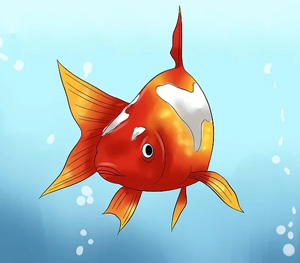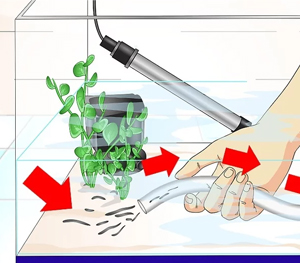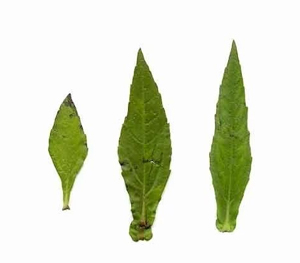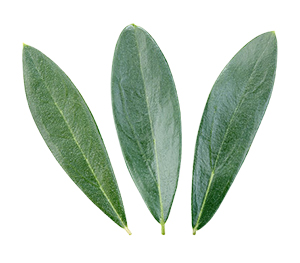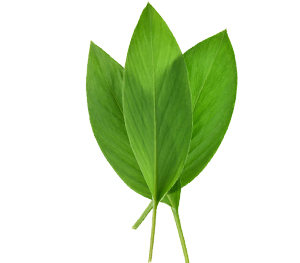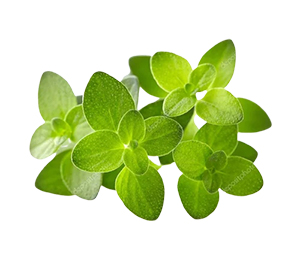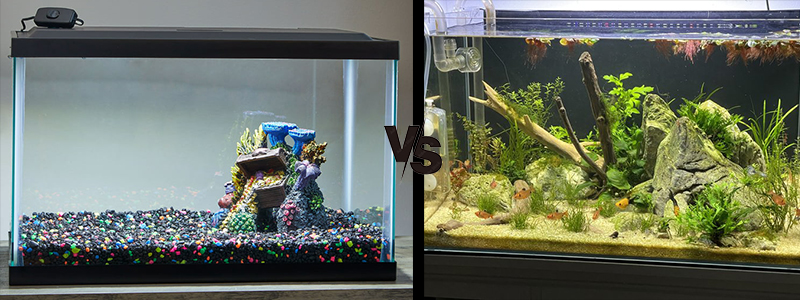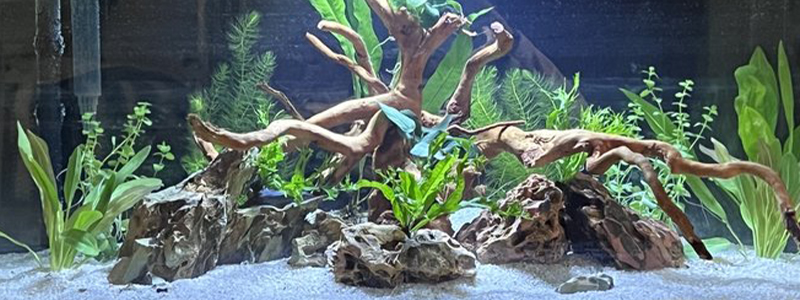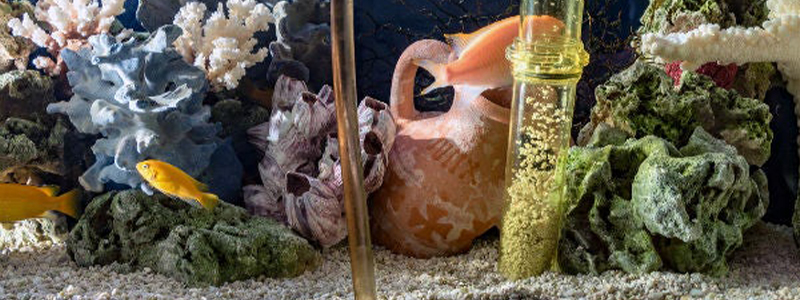Aquarium fishkeeping is not an easy task! As for someone who works hard in maintaining a healthy aquarium, dealing with aquarium fish parasites can be a frustrating problem.
It doesn’t matter if the common fish parasites were already present when you purchased your fish or hitchhiked their way into the tank on aquatic plants or coral – these aquarium fish parasites pose serious health risks and could potentially even lead to starvation.
However, there’s no need to worry! We have everything you need right here. In this article, we will explore the common fish parasites with their anti parasitic plants, antiparasitic foods, and reliable chemical medications too, that are safe and effective.
Thus, with our guidance, you’ll not be searching for how to get rid of parasites in fish tank, anymore! So, keep reading it till the end to create a thriving environment where your beloved fish can flourish.
What are Aquarium Fish Parasites?
Small organisms that rely on aquatic creatures such as fish and plants are known as aquarium parasites. You may notice them floating in the water or clinging to their hosts’ bodies. They can also be found on the tank’s substrate, decorations, and debris at times.
Common Fish Parasites
Worms
- Planaria: The white flatworms measuring 10 mm in length that are discovered on aquarium glass.
- Nematodes: Tiny white worms brought on by low oxygen levels that can harm fish.
- Flukes: They are tiny parasites that are harmless unless the fish are stressed or the tank is dirty.
Leeches: Larger parasites known as leeches, such as the Asian leech, fish leech, and horse leech, attach to hosts and ingest nutrients.
Snails: Small snails known as parasitic snails, such as bladder snails, ramshorn snails, pond snails, and trumpet snails, can overpopulate the tank and harm fish.
If not dealt with appropriately, these common fish parasites have the potential to harm your aquarium residents and can generate havoc in the aquarium’s ecosystem, so beware of them!
Disclosure: This article contains affiliate links. When you follow a link to purchase the products, I sometime earn a commission, at no additional cost to you. Read my full disclosure here.
How to Identify Aquarium Fish Parasites? Signs and Symptoms
- Lighter or darker patches.
- Yellow or gold 1mm spots.
- Opaque skin spots that are white or grey.
- Cloudy eyes and slime on the fins and body.
- Skin with a velvety texture.
Fish’s Behavior
- Acting wildly by “scratching,” “jumping,” “twitching,” and/or “shimmying”
- Breathing at the water’s surface level
- Rubbing up against things
- Rapid gill movement and gasping
How to Get Rid of Parasites in Fish Tank?
As soon as you observe the mentioned signs and symptoms in your fish, it is highly likely that fish are trying to survive parasite infestations. Here are the steps that you need to follow if you are wondering how to get rid of parasites in fish tank immediately;
Step 1: Determine the Type of Common Fish Parasites
It is important to properly identify the aquarium fish parasites present in your tank so that you can select the appropriate medication and prevent any possible harm to other healthy fishes. Each type of parasite requires a specific treatment, which is why it’s crucial to conduct thorough research before choosing the right medication, antiparasitic foods, or anti parasitic plants.
Step 2: Killing Parasites in Natural Way
Before giving fish any antiparasitic foods or medications, try treating aquarium fish parasites naturally by reducing the amount of food given to the fish and regularly cleaning the tank. This way, you will be interrupting their life cycle, and therefore, you’ll disrupt their ability to thrive in the tank.
Another helpful step is frequent gravel vacuuming, which slowly reduces and eliminates these parasites over time. To further combat unwanted worms in your fish tank, consider using specialized traps such as the planaria trap that can be found on the market. These traps are designed specifically for removing common fish parasites from your aquarium.
Step 3: Using Medications/Chemicals
Ich-X:
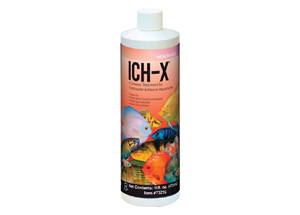
Quick view on Amazon
Available in: Australia, Canada, UK and US
Hikari has gained a reputation for producing high-quality fish food, and one of its standout products is Aquarium Solutions Ich-X. This medication from Hikari is highly effective in treating ich, external protozoan common fish parasites, and mild fungal infections among fish.
What makes Ich-X exceptional are its active ingredients: formaldehyde and malachite green chloride. These ingredients make the medication safe to use even on scaleless fish, invertebrates, and live plants.
- Remove chemical-based filtration and UV sterilizers, then clean the tank and change the water.
- For every 10 gallons of water, add 1 teaspoon (5 ml) of Ich-X.
- Replace a third of the tank’s water every day and administer the dose again.
- After the disease’s symptoms vanish, keep up your daily medication for at least three days.
Para Cleanse:
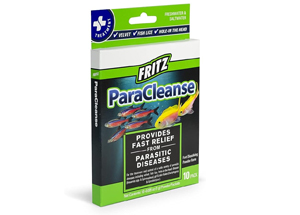
Quick view on Amazon
Available in: Australia, Canada, UK and US
Fritz ParaCleanse is a safe treatment for dealing with both internal and external aquarium fish parasites. For efficient treatment, stick to the manufacturer’s instructions;
- The tank should be cleaned, and the UV and chemical filters should be taken out.
- Give 10 gallons of water a single packet of ParaCleanse on Day 1.
- Repeat the ParaCleanse dose per 10 gallons of water on Day 3.
- carry out a 25% water change on day five.
- To treat newly hatched worms, repeat the five-day treatment after two weeks by going through Steps 1-4. To help with common fish parasites elimination during this time, don’t forget to feed fiber-rich foods.
PraziPro:
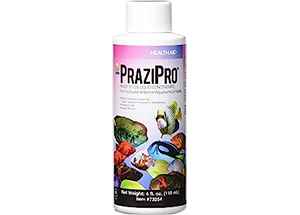
Quick view on Amazon
Available in: Australia, Canada, UK and US
For more difficult cases or prawn aquarium fish parasites like Vorticella and Scutalleria japonica, PraziPro, which has a higher praziquantel concentration, is the best option. It effectively removes all kinds of common fish parasites including tapeworms, flukes, flatworms, and turbellarians while being safe for fish, invertebrates, plants, and good bacteria.
- Once again remove chemical filters.
- For every 20 gallons of water, add 1 teaspoon (5 ml) of PraziPro after thoroughly shaking the bottle.
- Let the medication sit a week to sit before using it. If necessary, repeat the dose, but no more frequently than once every three days.
What are the Best Antiparasitic Foods to Treat Aquarium Fish Parasites?
- Fresh garlic: Fresh and crushed garlic has an active compound called allicin, which is known for its ability to fight against aquarium fish parasites. However, fresh garlic in antiparasitic foods should be used in moderation as it may cause irritation and interfere with iron absorption.
- Pineapple: This tropical fruit contains bromelain, an enzyme known for removing common fish parasites. Moreover, fruits like papaya, pomegranate, and blackberries are also widely used and recommended to be used in antiparasitic foods.
- Extra virgin coconut oil: Another amazing option to add to antiparasitic foods is extra virgin coconut oil. The high high concentration of lauric acid, this oil can kill parasities in a very less time compared to all other antiparasitic foods or anti parasitic plants.
- Carrots: Adding carrots, pumpkin, and other vegetables that are high in Vitamin A, into antiparasitic foods can help increase your body’s defense against parasite larvae. However, keep in mind to not give too many vitamins and make sure to balance antiparasitic foods with other healthy food items.
- Cruciferous vegetables: Including cruciferous vegetables like cabbage in fish’s antiparasitic foods can be beneficial for fighting aquarium fish parasites due to the presence of thiols. They are sulfur-bearing chemicals known for their anti-parasitic properties.
- Seaweed: Seaweed, especially kelp, is one of the best antiparasitic foods that offer a range of benefits when it comes to fish parasites. To ensure its effectiveness against common fish parasites, opt for seaweed food choices that are gently-dried and not too liquid.
What are Some Effective Anti Parasitic Plants?
- Neem leaves: These anti parasitic plants leaves fight parasites because they contain a variety of natural, bioactive substances. These substances have strong antiparasitic properties that can alter different aquarium fish parasites’ life cycles and prevent them from growing and reproducing.
- Eclipta Alba Leaves: Eclipta alba is another best alternative out of all the anti parasitic plants whose leaves are highly effective. They are added to aquarium water to target and eliminate harmful parasites.
- Olive Leaves: Olive leaves contain oleuropein, which can obstruct the parasitic cell walls of common fish parasites and impair their ability to carry out essential functions.
- Turmeric: Obtained from the Curcuma longa plant is turmeric, which is a wonderful use of anti parasitic plants. By lowering inflammation and boosting immune systems, it is added to fish food and improves their general health to survive aquarium fish parasites.
- Thyme: The essential oil in thyme, which is derived from the anti parasitic plants called Thymus vulgaris plant, has an amazing ability to fight against common fish parasites.
7 Ways to Prevent Aquarium Fish Parasites
- It’s important to isolate newly acquired fish before adding them to the main tank.
- To keep the aquarium free from common fish parasites, make sure to regularly clean it and change the water for optimal water quality.
- Excessive feeding should be avoided as this can lead to leftover food that attracts aquarium fish parasites.
- Give your fish high-quality food to enhance their immune system and overall health.
- Before introducing new plants, decorations, or fish into the tank, carefully inspect them for any signs of common fish parasites.
- Proper filtration is crucial in removing debris and wastes from the water column, which helps reduce the chances of common fish parasites breeding.
- To minimize stress levels among your fish inhabitants provide suitable hiding spots within their environment along with compatible tank mates.
Conclusion
To sum it up, how to get rid of parasites in fish tank isn’t that difficult! Aquarium fish parasites can be treated in multiple ways, via anti parasitic plants, antiparasitic foods, or medications. All that matter is how seriously you take that issue and your consistency in getting rid of them. Moreover, we have also mentioned some preventive measures too, to avoid aquarium fish parasites invasion in the first place.
Try sticking to our guide and your beloved fishes will soon be free from all kinds of common fish parasites in the aquarium.
Good Luck!

